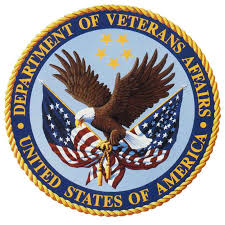 Among the revelations in the unfolding scandal over U.S. veterans’ health care is the sprawling size of the Veterans Health Administration (VHA). A vast component of the Department of Veterans Affairs (VA), the VHA runs the nation’s largest direct health care delivery system. It administers and operates facilities providing primary care, specialized care and social services as well as health care education and training to physicians and other professionals. VHA central office staff works in the 810 Vermont Avenue, N.W., Washington, D.C., VA headquarters, but most employees serve around the country in the VHA’s 152 hospitals, 800 outpatient clinics, 126 nursing home care units and 35 domiciliaries. A map of VHA facilities, organized by region, can be found here. More than half of the VA’s 312,841 employees (2013) work for the VHA.
Among the revelations in the unfolding scandal over U.S. veterans’ health care is the sprawling size of the Veterans Health Administration (VHA). A vast component of the Department of Veterans Affairs (VA), the VHA runs the nation’s largest direct health care delivery system. It administers and operates facilities providing primary care, specialized care and social services as well as health care education and training to physicians and other professionals. VHA central office staff works in the 810 Vermont Avenue, N.W., Washington, D.C., VA headquarters, but most employees serve around the country in the VHA’s 152 hospitals, 800 outpatient clinics, 126 nursing home care units and 35 domiciliaries. A map of VHA facilities, organized by region, can be found here. More than half of the VA’s 312,841 employees (2013) work for the VHA.
States and communities provided medical care to veterans in the first decades after the American Revolution. The Naval Home in Philadelphia opened in 1812, becoming the first federal facility authorized to provide veterans with food, housing and medical care. Other facilities followed, notably the Home for Disabled Volunteer Soldiers, authorized by President Lincoln in 1865 to serve Civil War casualties. Veterans benefits expanded after World War I, and President Hoover consolidated all veterans services, including medical care in 52 hospitals, when he created the Veterans Administration in 1930. World War II, the Korean War and the Vietnam War led to further growth of veterans health care services and hospital construction. In 1988, Ronald Reagan elevated the VA to a cabinet level department, overseeing the VHA.
Concerns about the quality and efficiency of veterans’ medical care have erupted more than once. During the Clinton administration, widespread criticisms led to VHA reform and decentralization. All operating units were organized into geographic sectors, called Veterans Integrated Service Networks, each adapted to respond to regional demographics. An open source electronic medical records system was also developed to improve care efficiency at low cost.
President Obama recognized the need for further modernization when he appointed General Eric Shinseki in 2009 to lead the VHA’s next transformation. Shinseki strove to improve the leadership culture, update electronic scheduling, expand education and training and reduce veteran homelessness. Before his May 30 resignation, Shinseki also presided over an ambitious construction program, building hospitals, clinics and outpatient centers during his tenure.
But now concerns about VA leasing project finances and delays may exacerbate the scandal over VHA health care delays and falsified records. A new Government Accountability Office (GAO) study of 41 outpatient lease projects revealed delays ranging from 6 months to 13.3 years. The GAO had adequate financial data on 31 of the projects and found cost overruns for 15, with projects exceeding budget outbalancing under budget projects by $18.5 million. Upon reviewing the report, the VA agreed with the GAO’s recommendation to update VHA’s guidance for outpatient clinic leasing. Until a permanent successor for Shinseki is confirmed, Acting Secretary Sloan D. Gibson will need to determine how to implement the GAO recommendations for the VHA along with other major changes needed at the beleaguered VA.
